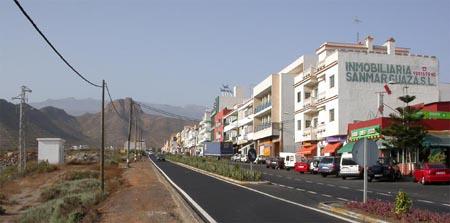Canary Islands 2005

Prof. Jacques Herzog, Prof. Pierre de Meuron,
Simon Hartmann, Christian Müller Inderbitzin, John Palmesino, Ann-Sofi Rönnskog
Exercise type: “P”
Locations: Group work in Basel and in research location
Start: Tuesday, 25 October 2005, 10am at ETH Studio Basel, Spitalstrasse 12, 4056 Basel
Our first steps on the Canary Islands were accompanied by prejudices and doubts as to whether there would be anything interesting to see there apart from the usual phenomena accompanying the distasteful development of mass tourism. We were trying to establish whether anything could be found that would illuminate the complex topic of urbanization in the 21st century.
We do not want to focus explicitly on the topic of tourism, but rather on its concrete, structural effects on the rapidly progressing urbanization of the seven Canary Islands. The driving economic force of this urbanization process is tourism, which not only reconfigures and displaces the preceding territorial structures – based on intensified agriculture– but which also causes a new social and spatial differentiation on the islands.
As a preliminary outline of our research, we can sketch the following theses: the Canarian territory was always shaped by monocultures, which were forced upon to the islands from outside. These monocultures shaped the economies, the society, and the urbanization of the islands. After centuries of agricultural monocultures, namely cultures for the production of dye material, or vineyards, or banana plantations, today it is the tourism industry from Europe – above all, from England and Germany– that reshapes the territory of the islands on a large scale. The terraced landscapes created for an agricultural use of the territory are largely destroyed, abandoned, or eroded.
Today, there is a new spatial/social and economic fragmentation and allocation of the territory. There are tourist cities and support cities in the south, as well as local cities in the north of the main islands Tenerife and Gran Canaria ? the capitals with their agglomerations and a set of smaller cities and urbanized zones. These northern towns were once successful venues for tourism or agriculture, but today they are confronted with growing identity issues and economic problems.
The touristic urban centers are increasingly trying to emulate the local “genuine” city by simulating historical architecture, the “local” style, or public space. Conversely, the “local cities” are adopting models and leisure infrastructures from the “tourist city” and integrating them into the public space, as in the case of the transformation of industrial ports into marinas and parks, as well as the construction of important cultural facilities.
From the above, one could derive a formula for a continuing global urban trend of development that unfolds in two directions: the tourism resort aims at becoming a city, and the city wants to become a tourism resort.
PEOPLE: PROF. JACQUES HERZOG, PROF. PIERRE DE MEURON, CHRISTIAN MUELLER INDERBITZIN, SIMON HARTMANN, JOHN PALMESINO, ANN-SOFI RÖNNSKOG, PUBLICATIONS: OPEN CLOSED

